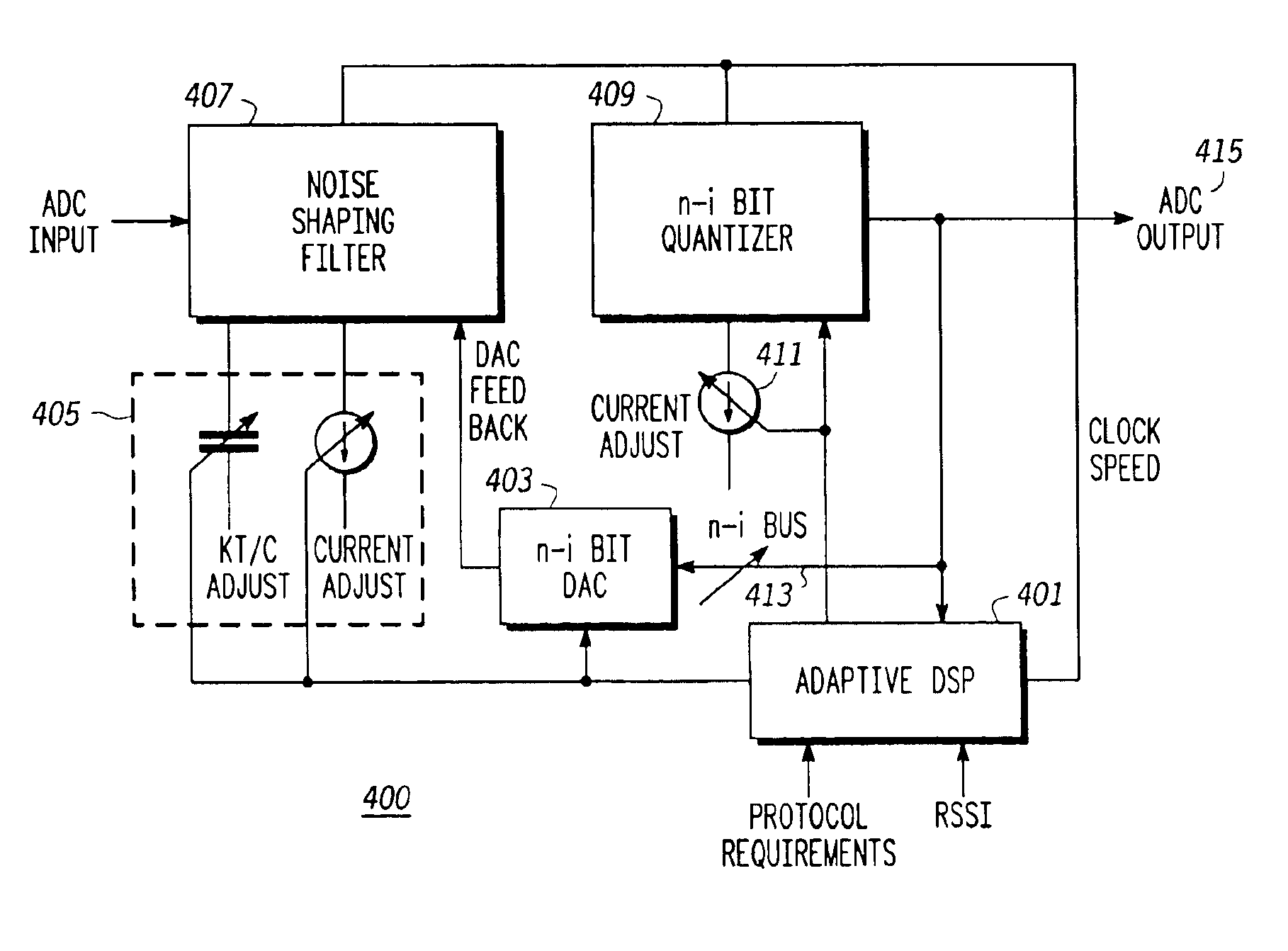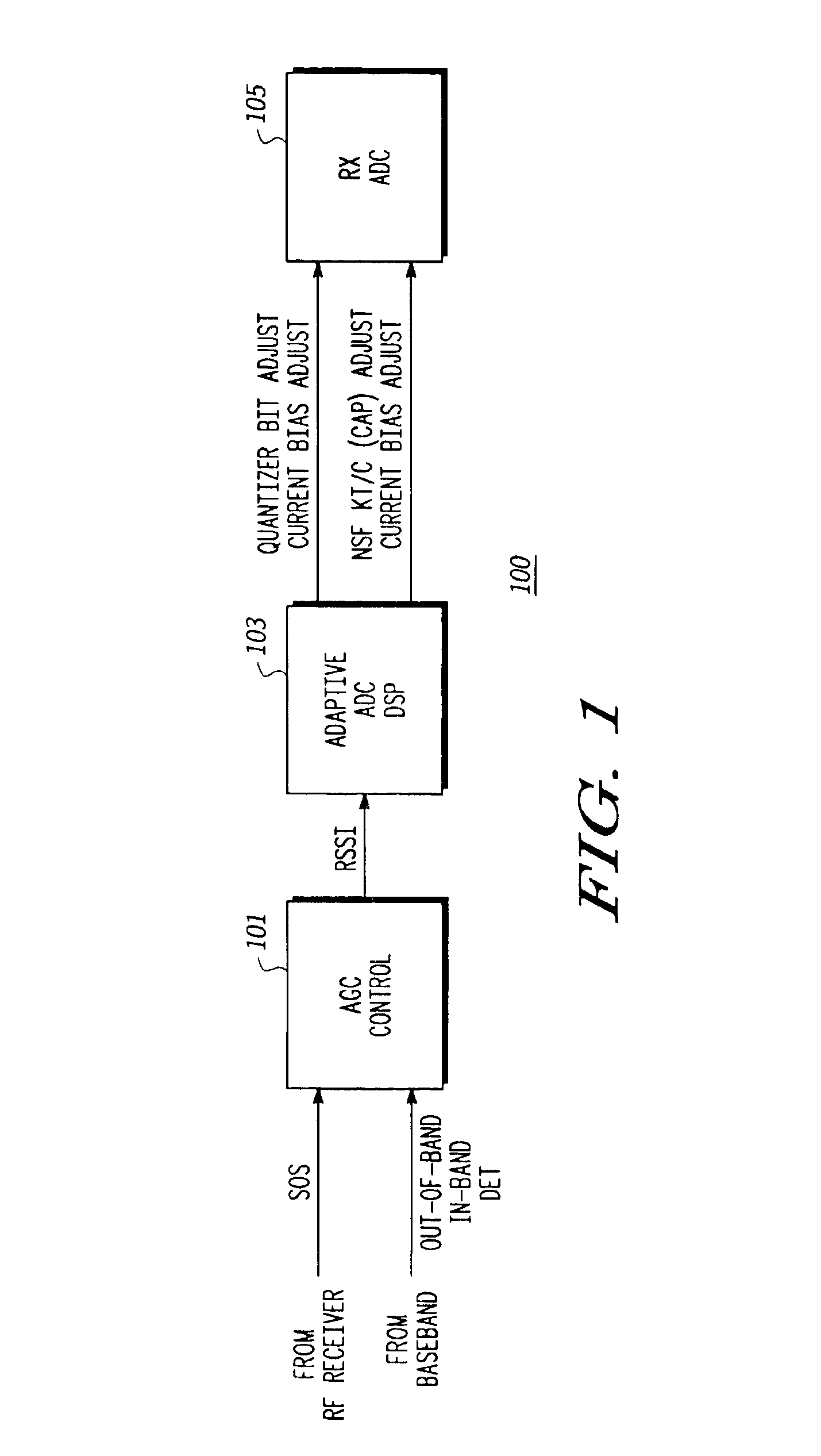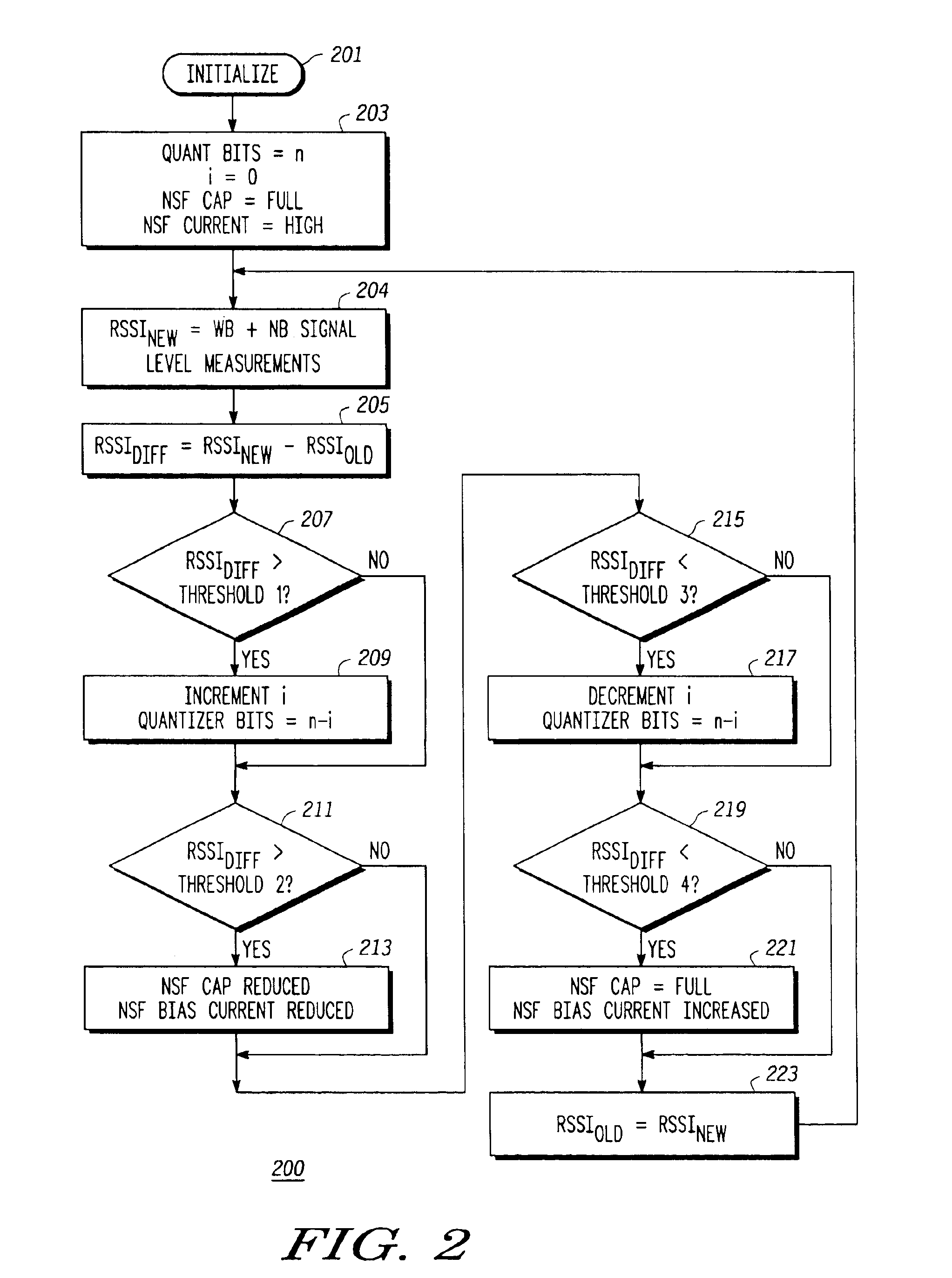Signaling dependent adaptive analog-to-digital converter (ADC) system and method of using same
an analog-to-digital converter and adaptive technology, applied in the field of analog-to-digital converters, can solve the problems of excessive current drain on portable devices, low efficiency mode, and large circuit design area, and achieve the effects of maximizing efficiency, reducing noise, and increasing current drain
- Summary
- Abstract
- Description
- Claims
- Application Information
AI Technical Summary
Benefits of technology
Problems solved by technology
Method used
Image
Examples
Embodiment Construction
While the specification concludes with claims defining the features of the invention that are regarded as novel, it is believed that the invention will be better understood from a consideration of the following description in conjunction with the drawing figures, in which like reference numerals are carried forward.
Referring now to FIG. 1, a system level block diagram illustrates the system and method that incorporates a signaling dependent adaptive analog-to-digital converter (ADC) 100. The invention includes an automatic gain controller 101 that uses both sum-of-squares (SOS) measurement from a radio frequency (RF) receiver as well as both in-band and out-of-band noise detection from baseband. As well known in the art, the digital input signal may be broken into in-phase (I) and out-of-phase (Q) components. A sum-of-squares calculation can be used to calculate a number representing total power received. As is well known in the art, the I and Q components are mathematically squared...
PUM
 Login to View More
Login to View More Abstract
Description
Claims
Application Information
 Login to View More
Login to View More - R&D
- Intellectual Property
- Life Sciences
- Materials
- Tech Scout
- Unparalleled Data Quality
- Higher Quality Content
- 60% Fewer Hallucinations
Browse by: Latest US Patents, China's latest patents, Technical Efficacy Thesaurus, Application Domain, Technology Topic, Popular Technical Reports.
© 2025 PatSnap. All rights reserved.Legal|Privacy policy|Modern Slavery Act Transparency Statement|Sitemap|About US| Contact US: help@patsnap.com



